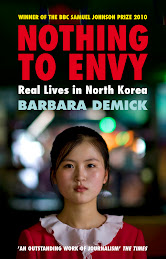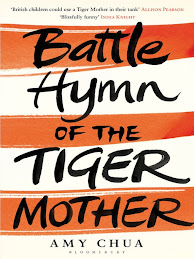
Wednesday, 25 August 2010
Saturday, 21 August 2010
Food supplies most at risk in Afghanistan

Aug 20, 2010
Index tags poor nations with conflicts as highly vulnerable
The Food Security Risk Index 2010 is compiled by a British risk analysis firm, Maplecroft, on the basis of 12 factors drawn up in collaboration with the United Nations' World Food Programme.
The criteria include rates of malnutrition, cereal production and imports, gross domestic product per capita, risk of extreme weather events, quality of agricultural and distribution infrastructure, conflict, and government effectiveness.
The poorest nations and those with conflicts have the greatest difficulties in ensuring their population has access to sufficient food, Maplecroft said.
Afghanistan was judged to be at the highest risk despite the billions of dollars of aid pumped into development projects since the 2001 United States-led invasion that overthrew the Taleban.
'The ongoing conflict in Afghanistan impacts infrastructure readiness, and the capability for distribution of supplies is greatly reduced,' Ms Fiona Place, an environmental analyst with Maplecroft, said.
'It's the impact on the road networks and the telecommunications infrastructure.'
Of the 50 nations most at risk, 36 were from sub-Saharan Africa and grappling with poor harvests and failing transport networks.
Among countries that were rated at 'high risk' or with unreliable supplies were Bangladesh, Pakistan, India and the Philippines, while countries deemed at 'medium' risk included China.
'Pakistan and sub-Saharan Africa which are dependent on food imports are going to be all the more vulnerable,' Ms Alyson Warhurst, head of Maplecroft, said.
Maplecroft attributed climate change to the leap in wheat prices this year and warned of harsh consequences for vulnerable nations.
Russia's worst drought in half a century prompted the country on Aug 5 to ban grain exports. Cereal production in Canada has been hit by flooding, while extreme temperatures in Ukraine and Kazakhstan have lowered cereal output, according to Maplecroft.
Ms Warhurst said the Russian export ban would add pressure on China to supply more food to world markets at a time when its domestic wheat and meat consumption were rising.
Maplecroft said it hoped the index could help in directing food aid or to guide investments in food production.
The most favourably placed countries with a low risk were the developed economies of North America and Western Europe, with Finland the most food-secure, followed by Sweden, Denmark and Norway.
Some European nations, including Italy, Greece and Portugal, had a medium risk.
Those nations 'don't produce enough of their own food supply, so they're dependent on importing', Ms Warhurst said. 'Basically, they're going to have to pay more for their imports.'
AGENCE FRANCE-PRESSE, REUTERS
1. What are the factors used as consideration to determine a country's food security?
2. Why do poor countries have difficulty in accessing food?
3. Which region has the worst food security problem and why?
4. What do you think about Singapore's food security? Explain why.
Wednesday, 11 August 2010
Made in Defu Lane. Sold in UK's Selfridges


Local company Chye Choon - which manufactures the Peacock brand of bee hoon - supplies its noodles to 15 countries around the world. China, Japan, Malaysia, Indonesia and Australia are the biggest importers of made-in-Singapore food products. -- ST PHOTOS: BRYAN VAN DER BEEK
But what may have been an unsophisticated plan to sell its bee hoon overseas has worked wonders for Chye Choon Foods. From mainly supplying to Singapore hawkers and markets, the home-grown company - which makes the Peacock brand of dried bee hoon - now exports the rice vermicelli to 15 countries, including Russia and Lebanon.
'It was the only way to grow,' said Chye Choon owner Jimmy Soh of his leap of faith to venture abroad.
'Singapore is a small market and there is a lot of opportunity overseas.'
It is a view shared by a growing number of local food manufacturers.
Smaller companies are now joining the big boys such as Yeo Hiap Seng and Prima Food in contributing to the growth of Singapore-manufactured food exports.
Made-in-Singapore food products - from condiments and dried food to frozen fishballs and rendang premixes - hit a record $3.5 billion last year, an increase of nearly $1 billion since 2005, with China, Japan, Malaysia, Indonesia and Australia the biggest importers.
And while this makes up only a small proportion of the $200 billion worth of products exported from Singapore last year - including more expensive items which are only partially made in Singapore, like electronic parts - the rate at which the numbers are growing is encouraging.
The Singapore Food Manufacturers' Association (SFMA) - which has 286 members - predicts exports to hit the $4 billion mark this year. Said SFMA president Wong Mong Hong: 'Our members are very excited to break into new markets. There is a sense of pride when they see their brands on shelves overseas, and of course it means more sales.'
The steady growth of exports can be put down to three reasons, say experts: the increasing number of local manufacturers, companies' willingness to expand overseas, and more foreign demand for local products.
There are now 781 local manufacturers, of which half are pushing their products overseas. This is higher than in 2005 when there were 677 companies, of which 300 exported.
A stagnant local market - which has hovered around the $2.5 billion mark since 2004 - has also forced firms to venture overseas. Overseas demand for Singapore products has gone up too, said International Enterprise (IE) Singapore, which promotes the overseas growth of Singapore-based businesses.
'There is a growing acceptance of ethnic cuisine and demand for greater food variety in developed countries,' said Mr Daniel Seah, director of IE Singapore's food division. He added that 'the distinctive flavour of Singapore food' in local products is also a big reason for the success of such products overseas, with items like Prima's laksa paste popular in Russia and canned chrysanthemum tea highly sought after in Switzerland.
The government statutory board has also given local companies a leg-up in recent years. In October last year, IE Singapore arranged for 11 local companies - including Chye Choon Foods - to display products at the famous Selfridges Food Hall in Oxford Street, London, for a week.
Currently, more than 20 local brands are on the shelves of 15 Jusco supermarkets in Guangdong, China, as part of a month-long campaign that also stops in Beijing and Shanghai.
The SFMA started organising similar programmes in 2006. It now organises eight to 12 overseas trade shows yearly for companies to showcase products.
And while big players like Yeo Hiap Seng, which exports to over 60 countries, have been a presence overseas for over 30 years, newcomer Tai Hua Food Industries is closing the gap. The Jalan Besut firm makes about 5,000 tonnes of soya sauce a year and now supplies it to 40 countries, up from half that number five years ago.
For Defu Lane-based Chye Choon Foods, the Selfridges stint led to a permanent spot on the store's shelves. The company now devotes about 15 per cent of the 20 tonnes of bee hoon it makes daily to overseas markets.
Chye Choon's owner Mr Soh, whose products are also sold at the upmarket Whole Foods Market chain in the United States, hopes to double his exports in the next five years. He said: 'Traders overseas are also very open to import our stuff because Singapore is synonymous with quality.'
Experts say the growth spells good news. It not only enhances the Singapore brand but may also lead to lower cost of food for the Singapore market in the long run, said Singapore Polytechnic retail management senior lecturer Sarah Lim.
'As local companies grow, money will be ploughed back to improve the production and quality of goods here,' she said. 'As they grow, these companies will reap economies of scale which will mean cheaper products for locals in the long run.'











